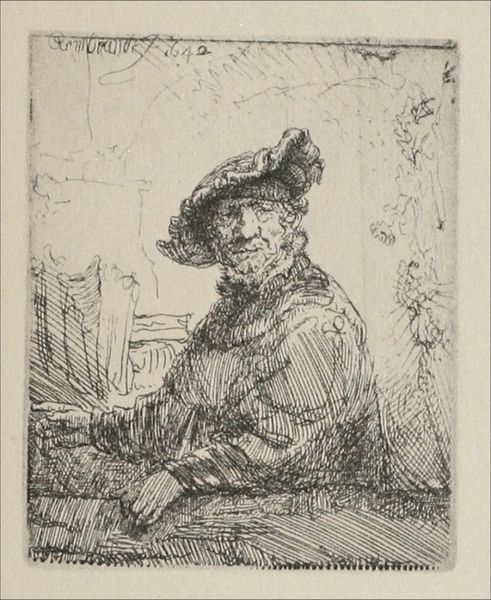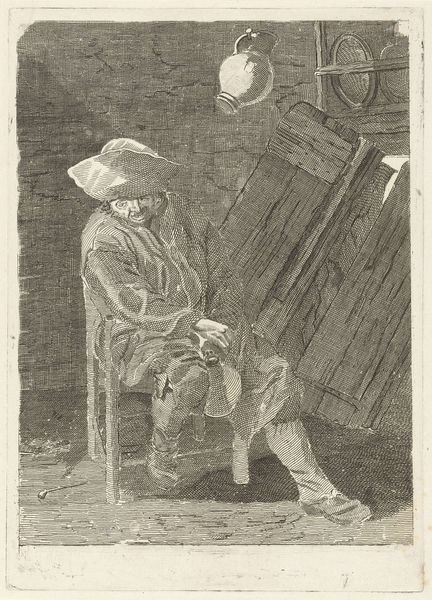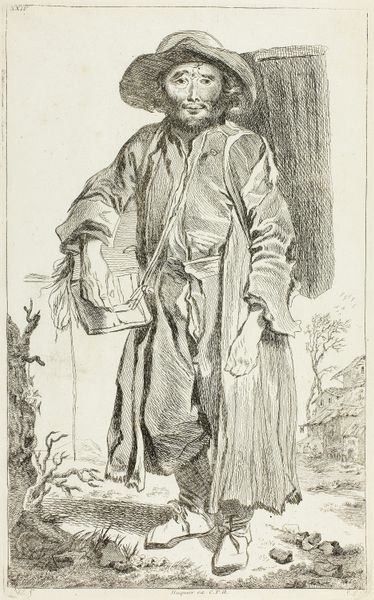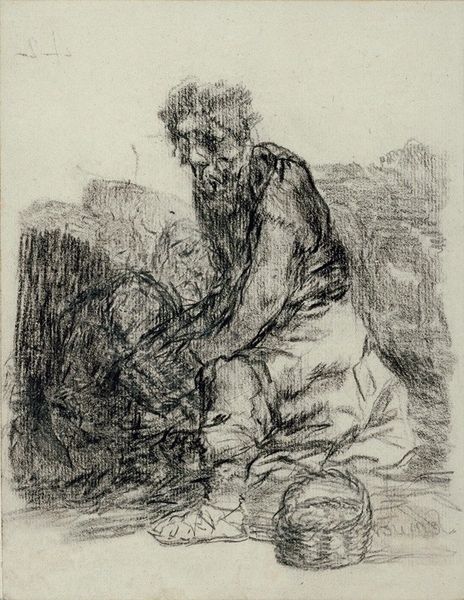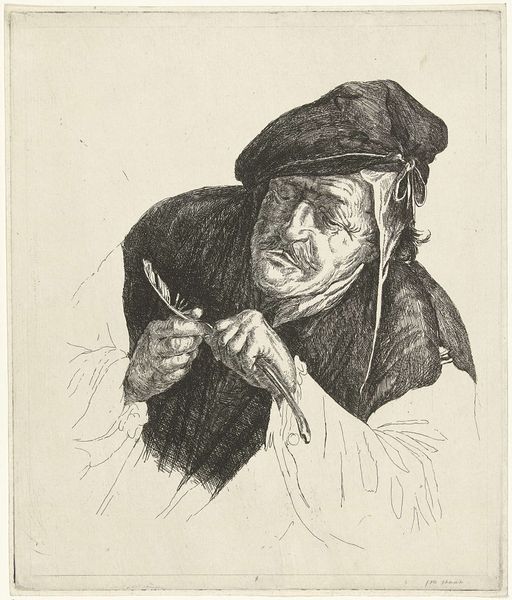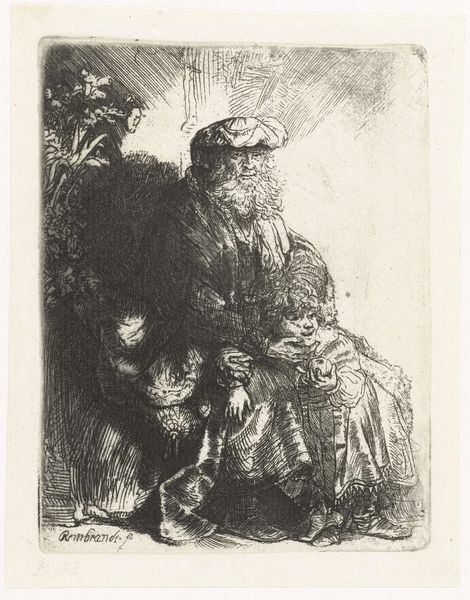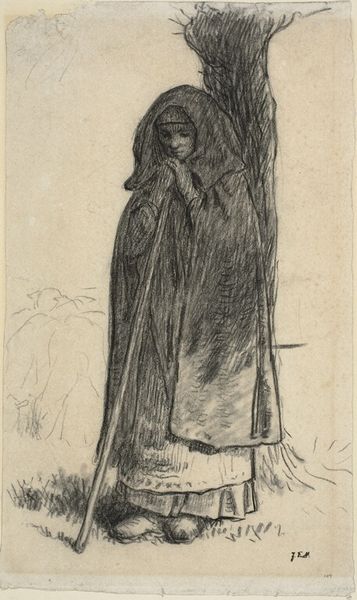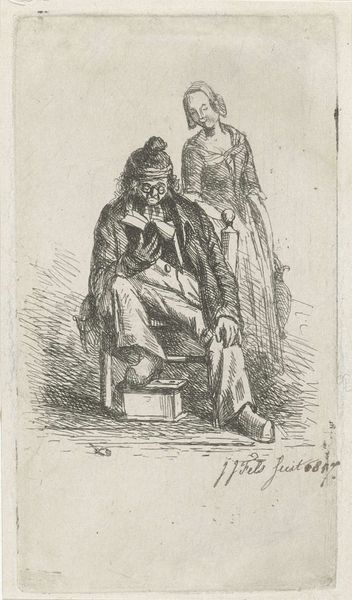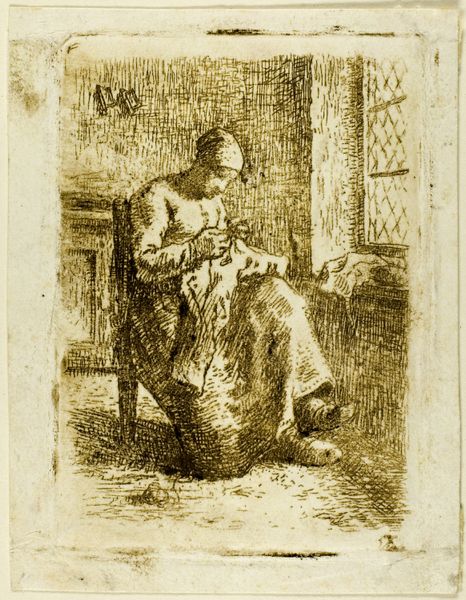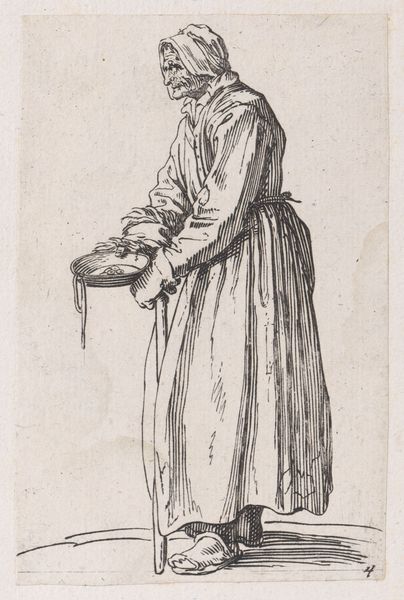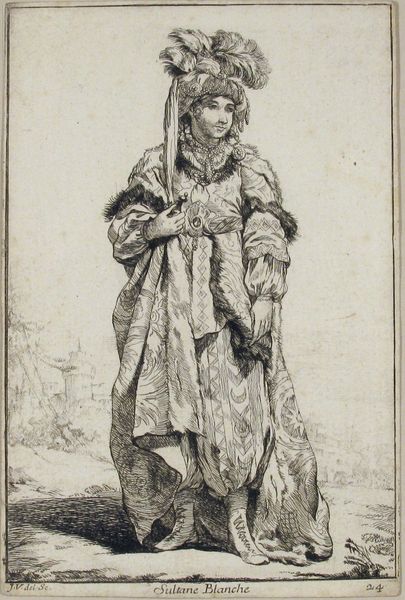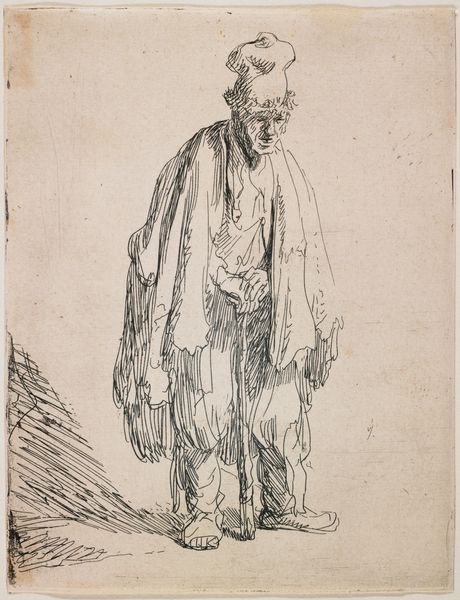
drawing, pencil
#
portrait
#
drawing
#
16_19th-century
#
pencil sketch
#
pencil drawing
#
pencil
#
genre-painting
#
realism
Copyright: Public domain
Editor: So this drawing is called "Vegetable Trader" by Paul Gavarni, done in pencil. It’s a portrait, but almost feels like a snapshot, catching someone in a fleeting moment. What jumps out at you when you look at this piece? Curator: The realism of this work, especially given its probable creation in the 19th century, really speaks to me. How does Gavarni represent a class often ignored in fine art, giving visibility to the labour and lives of working-class women? Consider, too, the economics of the period: who benefits from the trader's labour? Editor: It's true; I hadn't thought of it like that. I guess I saw it more as just a slice-of-life, without considering the bigger picture. The woman does seem to be carefully preparing some greens. Curator: Exactly! We can analyze it using intersectionality. Gender plays a role, as this is a woman likely involved in very physical labor, and her place in the socioeconomic hierarchy has bearing too. This is more than just a drawing of someone selling vegetables; it is a reflection on societal structures and power. Does the rough sketch-like quality impact this narrative at all for you? Editor: Yes, it adds to the sense of immediacy. It feels almost journalistic, like Gavarni wanted to document a specific person and a specific moment in time. This is making me consider the lives of women in the 19th century in a new way. Curator: Precisely! It's a powerful testament to the value of art as a means of social commentary and historical insight. Next time, consider where power resides when analysing a piece. Editor: Thanks, I will. It's amazing how much more you can see when you think about the social and historical background of an artwork. Curator: It's about creating meaningful discussions with artwork and being aware of our subjective perspective as viewers!
Comments
No comments
Be the first to comment and join the conversation on the ultimate creative platform.
